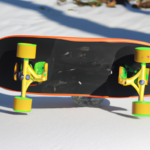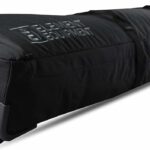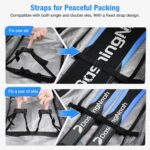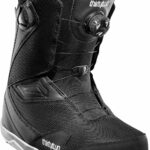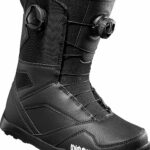Are you curious if your skateboard helmet can double up as a snowboarding helmet too? In this article, you’ll discover the distinctions and similarities between the two, and whether mixing them is encouraged or not. Let’s navigate the complex world of head protection in extreme sports and address your concerns about switching helmets for different activities.
Understanding the Purpose of Helmets
Definition of a Helmet
In its most basic form, a helmet is a type of personal protective gear designed to protect your head from injuries. Its primary function is to safeguard your skull and brain against impact injuries, which can be particularly severe considering your brain is the command center of your body.
The primary goal of using helmets in sports
Sports can be exhilarating. But they also present a myriad of hazards, especially contact sports and those that involve high-speed movement. This is where helmets come in. The main purpose of using helmets in sports is to lessen the risk of head injuries, like concussions, fractures, and traumatic brain injuries. When you put on a helmet, you’re adding an extra layer of protection between your vulnerable noggin and potential danger.
Variety of helmets for different sports
Not every sport uses the same type of helmet. Each sport presents unique dangers, and its corresponding helmet is tailored fit to provide optimal protection. Football helmets, for instance, feature a faceguard to prevent facial injuries. Bicycle helmets, meanwhile, are designed with aerodynamics in mind. Then you have skateboard and snowboard helmets, which we’ll delve into more deeply in the next sections.
Comparing Skateboard and Snowboarding Helmets
The design and structure of skateboard helmets
Skateboard helmets are typically rounded and cover the back of your head. They’re crafted to shield your head against the impact from falls that are common in skateboarding. They usually come with chin straps to secure the helmet in place and might also feature soft inner lining for added comfort.
The design and structure of snowboarding helmets
Snowboarding helmets, on the other hand, are made to withstand harsh weather conditions and the risks inherent in the sport. They’re typically equipped with insulation to keep your head warm in freezing temperatures. These helmets also offer protection for your ears and might include vents for temperature regulation.
Similarities and differences between the two
It’s worth noting that skateboard and snowboarding helmets might look alike, but they have differences that make them suitable for their intended sports. Besides the insulation found in snowboarding helmets, these helmets might also have a goggle clip to keep your vision clear during your snowy expeditions. Skateboard helmets, meanwhile, are generally lighter and more ventilated since overheating is a more imminent threat in this sport.
The Specific Protection Offered by Skateboarding Helmets
Skateboarding risks and injuries commonly prevented by helmets
Skateboarding comes with an unavoidable risk of falls. Whether you’re a newbie struggling with your balance or a seasoned pro attempting a daring trick, crashes are part of the game. These crashes can result in head injuries such as concussions or even skull fractures. This is where a skateboard helmet shines, providing essential protection whenever you take an unfortunate tumble.
The specific design elements in skateboard helmets for protection
Skateboard helmets are designed with a hard outer shell and shock-absorbing inner liner, intended to reduce the force of an impact. The rounded profile of most skateboard helmets can also distribute the force of the impact, potentially reducing the risk of serious injury.
The Specific Protection Offered by Snowboarding Helmets
Snowboarding risks and injuries commonly prevented by helmets
Much like skateboarding, snowboarding can lead to crashes that result in severe head injuries. You might fall while racing downhill or collide with other snowboarders. Worse, you could even hit a tree if you lose control. These accidents highlight the need for a snowboarding helmet, which can significantly lower the chances of a bad head injury.
The specific design elements in snowboarding helmets for protection
Snowboarding helmets provide protection both from impacts and the chilling cold. They are crafted with a tough outer shell and shock-absorbing layer, safeguarding your head during falls or collisions. These helmets also feature insulation to shield your head from freezing temperatures, as well as vents you can adjust as needed for comfort.
Interchangeability of Helmets Across Sports
General opinion on helmet interchangeability
While helmets might appear interchangeable across different sports, this is generally discouraged. Helmets are designed and tested to withstand the specific risks and forces common in their intended sports. Using a helmet for a different sport might not provide you with the necessary protection, potentially endangering your safety.
Possible risks of using different sports helmets interchangeably
Understandably the temptation to use a single helmet for different sports for convenience or to save money might be strong. But doing so can leave you at risk. A helmet designed for one sport might not necessarily protect you effectively from the hazards or injury mechanisms in another sport, increasing the likelihood of a serious injury.
Using a Skateboard Helmet for Snowboarding: Pros and Cons
Benefits of using a skateboard helmet for snowboarding
One could argue the convenience aspect of using a skateboard helmet for snowboarding. And sure, it may provide some level of protection against head impact in case of a crash. Some skateboard helmets also offer more ventilation, which might feel comfortable during physically demanding activities.
Potential drawbacks and risks of using a skateboard helmet for snowboarding
However, it’s essential to acknowledge the potential drawbacks too. A skateboard helmet usually lacks the insulation that keeps your head warm in a snowboarding helmet. The absence of goggles’ attachment may also be an issue. More importantly, it might not offer adequate protection for the different types of impacts you can experience in snowboarding.
The Importance of Proper Helmet Fit
The role of helmet size and fit in safety
The importance of proper helmet fit can’t be overstated. Even the most well-designed helmet can’t protect you effectively if it doesn’t fit right. It must sit snugly on your head and not shift around when you move, ensuring constant protection. A helmet that’s too loose can easily fall off during a crash, while one that’s too tight can cause discomfort and head fatigue.
How to ensure proper helmet fit
To ensure the right fit, you’ll need to measure the circumference of your head just above your eyebrows. Use this measurement when checking the sizing charts provided by helmet manufacturers. Ideally, try on the helmet before buying to ensure it feels comfortable and secure. The straps should be adjusted to meet right below your ears and form a ‘V’ shape.
Regulations and Standards for Sports Helmets
Existing helmet standards for skateboard
Skateboard helmets need to meet certain standards to ensure their safety efficacy. The Consumer Product Safety Commission (CPSC) standard is widely used in the U.S. This standard ensures the helmet can withstand a series of impacts and offers sufficient coverage for your head.
Existing helmet standards for snowboarding
On the other hand, snowboard helmets usually follow the American Society for Testing and Materials (ASTM) F2040 or CE EN1077 standards. These standards test the helmets against blunt impacts and sharp objects to ensure your safety playing in the snow.
Implications of standards in helmet interchangeability
Different standards for different sports highlight the fact that helmets are sport-specific. They underline the risks of using helmets interchangeably. A skateboard helmet might fail to provide adequate protection against sharp objects, which is one of the risks in snowboarding.
Expert Opinions on Helmet Interchangeability
Views from skating experts on helmet interchangeability
Skating experts usually advocate for using skateboarding-specific helmets when you’re on your board. They understand the unique protection these helmets offer and usually warn against using helmets designed for other sports.
Views from snowboarding experts on helmet interchangeability
Likewise, snowboarding experts would recommend using a snowboarding-geared helmet. They emphasise the insulation and the goggle clip advantages that are absent in other types of helmets, like the skateboarding ones.
Making the Right Helmet Choice
Factors to consider when choosing a helmet
Choosing a helmet isn’t just about selecting the right size or a preferred color. You’ll also want to consider the helmet’s construction, the presence of any safety certification, its fit, and comfort and, significantly, whether it’s appropriate for your sport.
Making an informed decision about helmet use
Informed choices about helmet use can save lives. Remember, a helmet designed for skateboarding might not protect you as well when you’re snowboarding and vice versa. The best choice isn’t necessarily the most convenient, but the safest. Protect your greatest asset, your brain; ensure you’re wearing the right helmet.
- What Snowboard Bindings Should I Get? - January 23, 2024
- What Size Screws For Snowboard Bindings? - January 23, 2024
- How To Snowmobile On Water? - January 23, 2024

